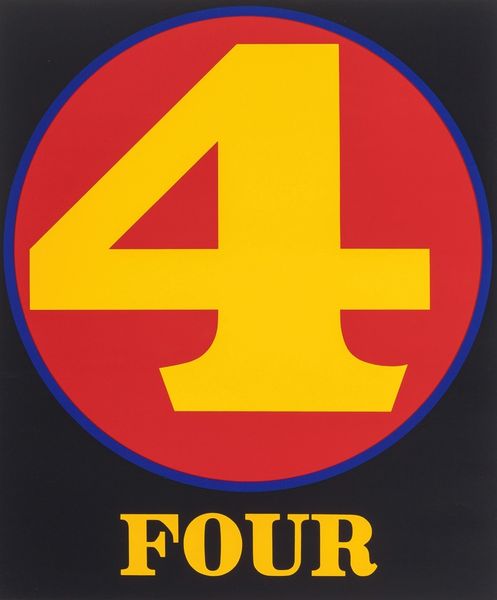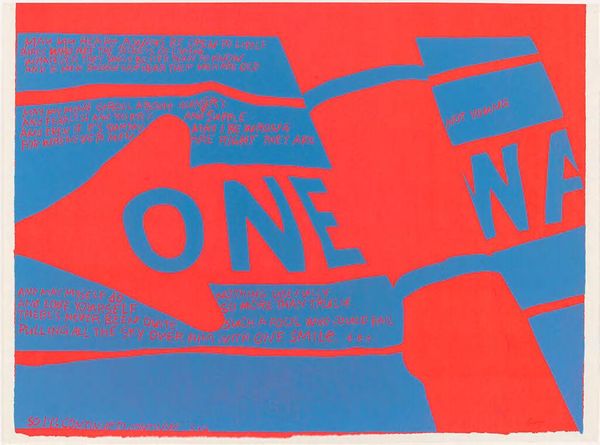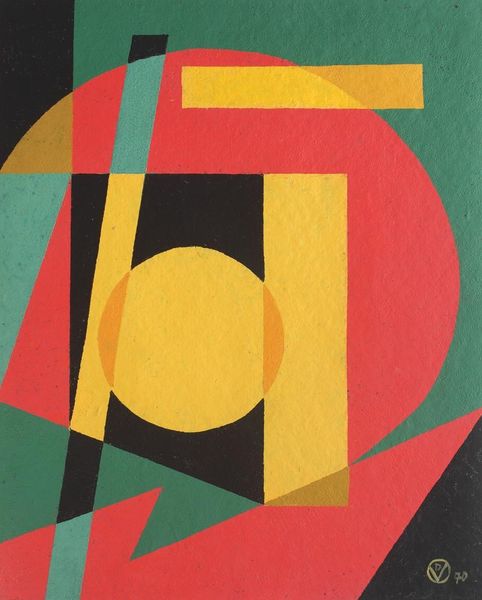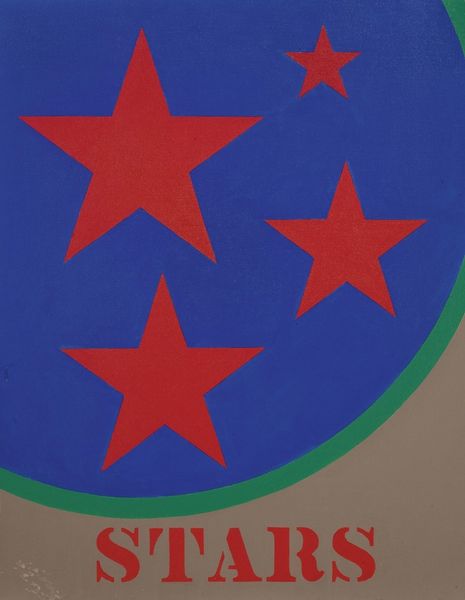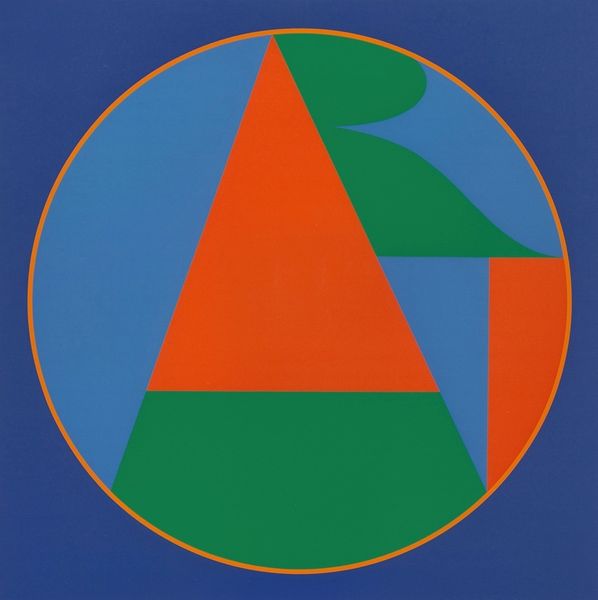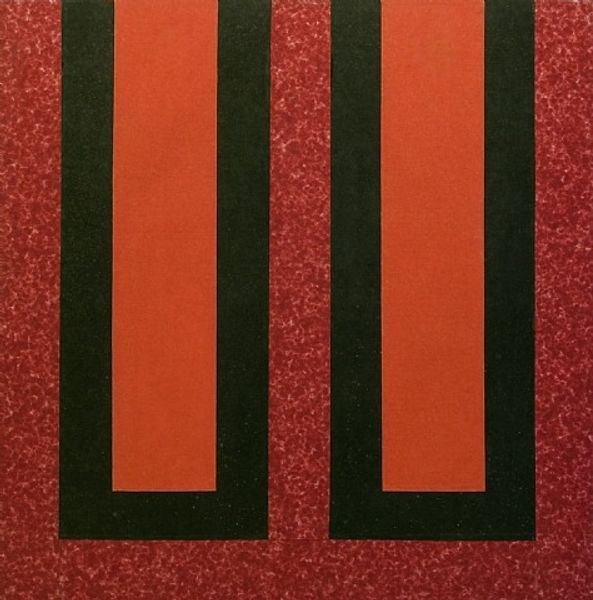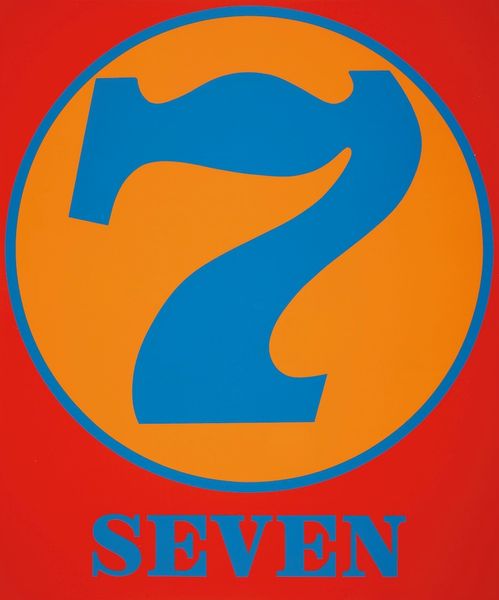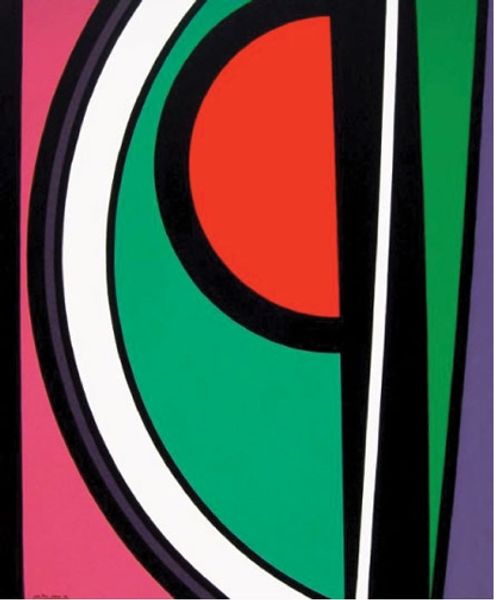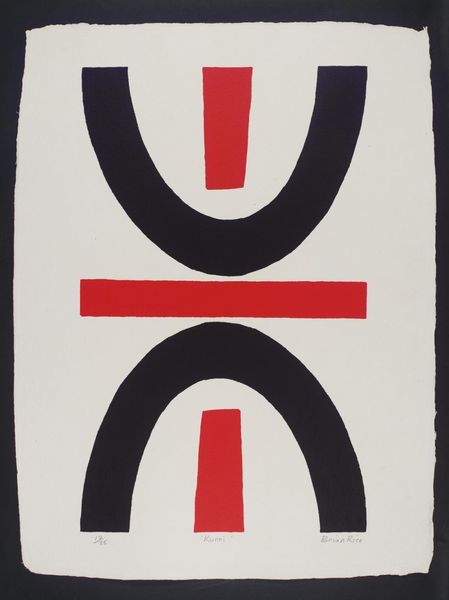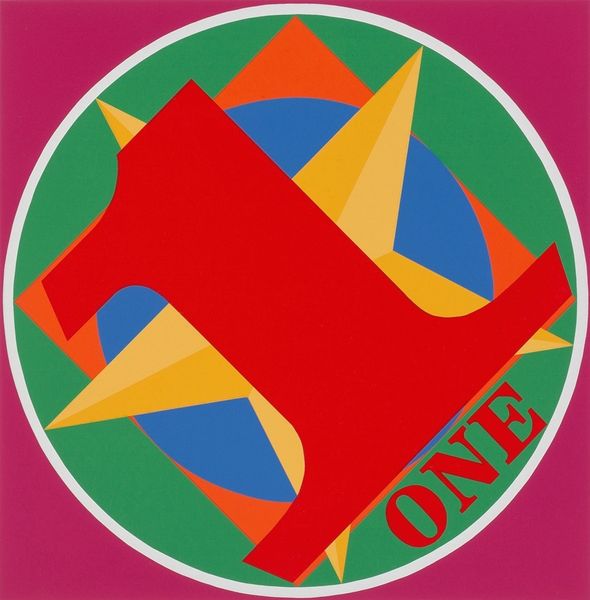
typography
#
pop art
#
typography
#
geometric
#
abstraction
#
pop-art
Copyright: Modern Artists: Artvee
Editor: So here we have Robert Indiana's "One" from his "Numbers" series, created in 1968. It's so bold, graphic, and the colors are so saturated. It makes me think of advertising or maybe a sign. How do you interpret this work in relation to the culture of the late 60s? Curator: You're right, it’s intensely graphic and visually arresting! Think about Pop Art as a movement, emerging in a postwar era defined by consumerism. The artwork appropriates the visual language of advertising and mass media. Indiana elevates everyday symbols and language to fine art. What sociopolitical undertones might be simmering beneath this seemingly simple presentation of a number? Editor: Well, 1968 was a turbulent year. Was it perhaps highlighting the significance, or maybe the superficiality, of singular moments or individuals within those complex events? Curator: Exactly! We might think about the power of the individual amidst the Vietnam War protests, the Civil Rights movement. The number "one" can symbolize unity, or conversely, isolation. How does this push and pull relate to how we consider these pivotal historical movements and figures? What do you feel when you view it now? Editor: It makes me think about how movements begin with a single person, one act of defiance, one voice. I like how it distills something complex into a memorable image that's also deeply connected to its time. Curator: And that’s precisely what Pop Art does so powerfully – capturing the zeitgeist, reflecting our culture back at us, while simultaneously questioning it. It underscores how even seemingly simple art can serve as a time capsule. Editor: Definitely, this reframes my initial thoughts. Thanks!
Comments
No comments
Be the first to comment and join the conversation on the ultimate creative platform.
